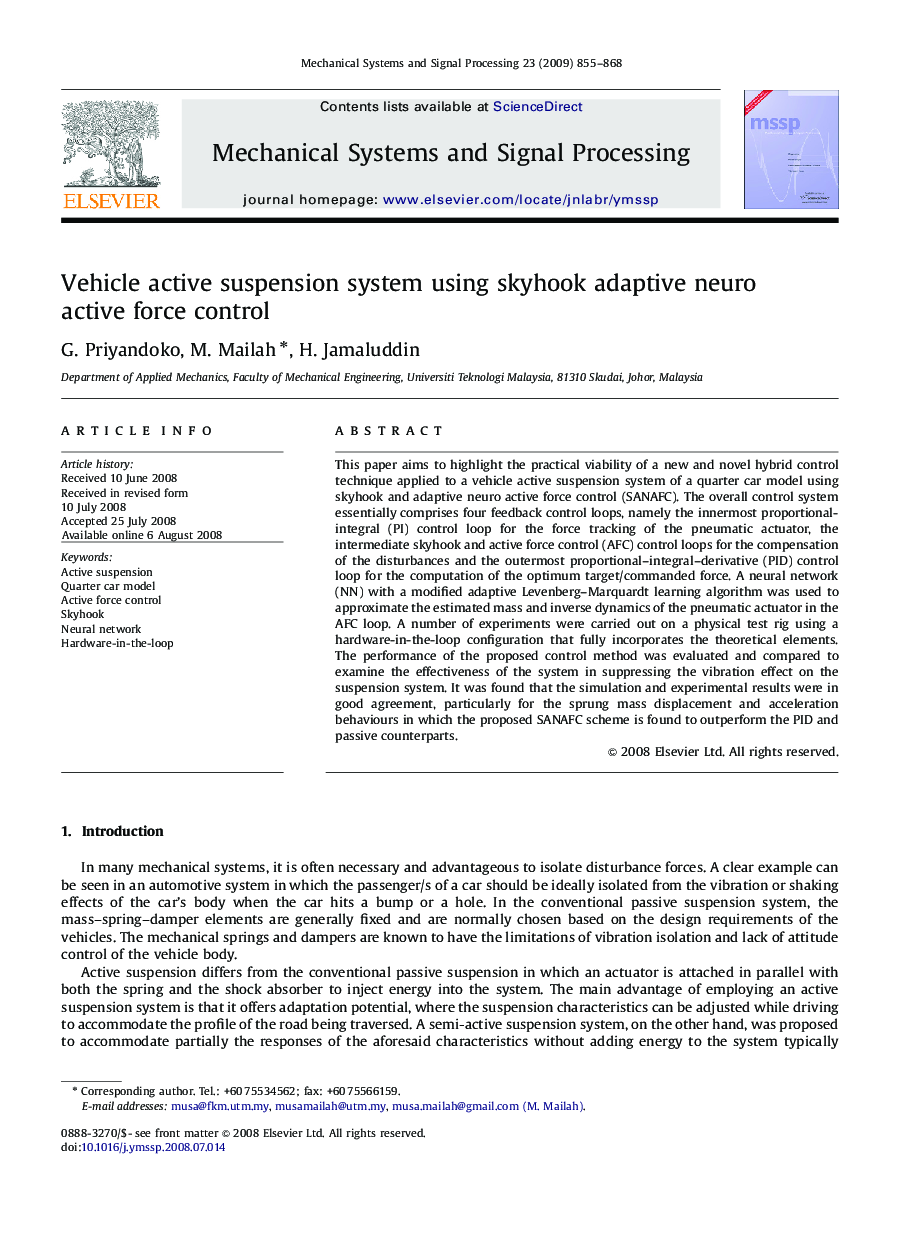| Article ID | Journal | Published Year | Pages | File Type |
|---|---|---|---|---|
| 565694 | Mechanical Systems and Signal Processing | 2009 | 14 Pages |
This paper aims to highlight the practical viability of a new and novel hybrid control technique applied to a vehicle active suspension system of a quarter car model using skyhook and adaptive neuro active force control (SANAFC). The overall control system essentially comprises four feedback control loops, namely the innermost proportional-integral (PI) control loop for the force tracking of the pneumatic actuator, the intermediate skyhook and active force control (AFC) control loops for the compensation of the disturbances and the outermost proportional–integral–derivative (PID) control loop for the computation of the optimum target/commanded force. A neural network (NN) with a modified adaptive Levenberg–Marquardt learning algorithm was used to approximate the estimated mass and inverse dynamics of the pneumatic actuator in the AFC loop. A number of experiments were carried out on a physical test rig using a hardware-in-the-loop configuration that fully incorporates the theoretical elements. The performance of the proposed control method was evaluated and compared to examine the effectiveness of the system in suppressing the vibration effect on the suspension system. It was found that the simulation and experimental results were in good agreement, particularly for the sprung mass displacement and acceleration behaviours in which the proposed SANAFC scheme is found to outperform the PID and passive counterparts.
